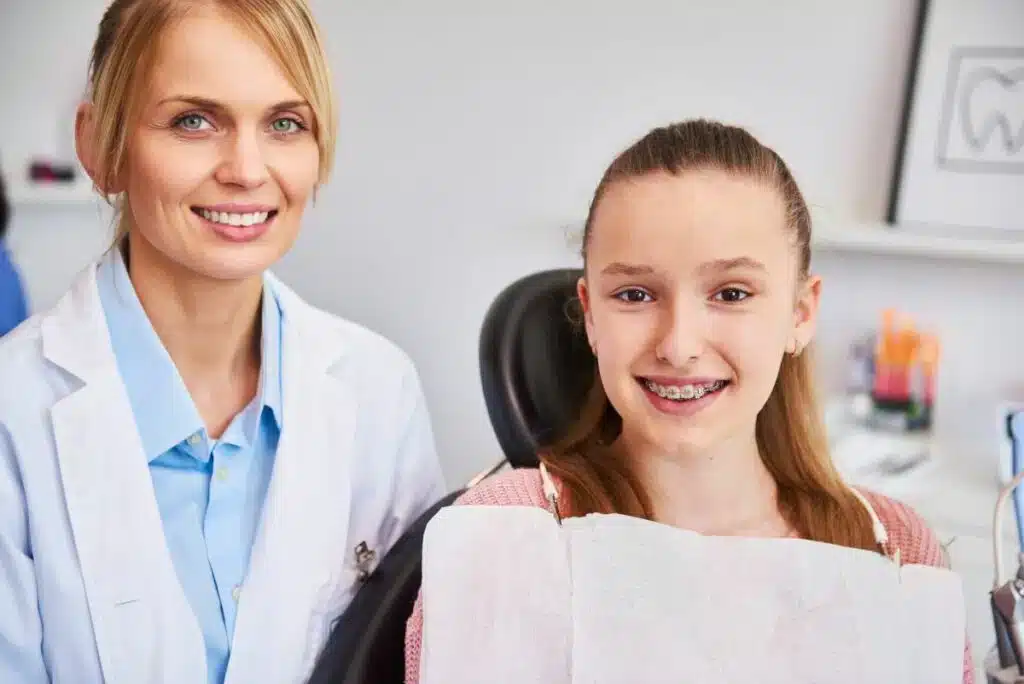Some Known Details About Causey Orthodontics
Table of ContentsNot known Facts About Causey OrthodonticsAn Unbiased View of Causey OrthodonticsAn Unbiased View of Causey OrthodonticsGet This Report about Causey OrthodonticsThe Best Guide To Causey Orthodontics
Neglecting occlusal relationships, it was common to remove teeth for a range of oral issues, such as malalignment or congestion. The principle of an undamaged dentition was not widely appreciated in those days, making bite relationships seem unimportant. In the late 1800s, the principle of occlusion was crucial for creating trusted prosthetic replacement teeth.As these ideas of prosthetic occlusion proceeded, it ended up being a very useful tool for dentistry. It remained in 1890 that the job and impact of Dr. Edwards H. Angle started to be felt, with his payment to modern-day orthodontics especially notable. Originally concentrated on prosthodontics, he educated in Pennsylvania and Minnesota before routing his focus towards dental occlusion and the treatments needed to maintain it as a regular condition, therefore coming to be referred to as the "father of modern orthodontics".

The concept of suitable occlusion, as proposed by Angle and integrated right into a category system, made it possible for a shift towards treating malocclusion, which is any deviation from normal occlusion. Having a complete set of teeth on both arcs was very sought after in orthodontic therapy as a result of the demand for precise connections between them.
Causey Orthodontics Can Be Fun For Everyone
As occlusion became the key priority, face proportions and aesthetic appeals were disregarded - orthodontist expert. To achieve optimal occlusals without making use of outside forces, Angle postulated that having excellent occlusion was the very best method to gain maximum face appearances. With the passing away of time, it came to be rather noticeable that also an exceptional occlusion was not appropriate when taken into consideration from an aesthetic perspective
It became evident that orthodontic therapy could adjust mandibular development, resulting in the formation of functional jaw orthopedics in Europe and extraoral force measures in the US. These days, both functional appliances and extraoral tools are used around the world with the purpose of modifying growth patterns and forms. As a result, seeking real, or a minimum of enhanced, jaw connections had actually come to be the primary objective of therapy by the mid-20th century.
All about Causey Orthodontics
 The American Journal of Orthodontics was developed for this function in 1915; prior to it, there were no scientific purposes to follow, neither any kind of specific classification system and braces that lacked functions. Till the mid-1970s, braces were made by covering steel around each tooth. With improvements in adhesives, it came to be possible to rather bond metal brackets to the teeth.
The American Journal of Orthodontics was developed for this function in 1915; prior to it, there were no scientific purposes to follow, neither any kind of specific classification system and braces that lacked functions. Till the mid-1970s, braces were made by covering steel around each tooth. With improvements in adhesives, it came to be possible to rather bond metal brackets to the teeth.Andrews offered an insightful meaning of the excellent occlusion in permanent teeth. This has actually had purposeful results on orthodontic treatments that are administered on a regular basis, and these are: 1. Correct interarchal relationships 2. Appropriate crown angulation (pointer) 3. Correct crown inclination (torque) 4. No rotations 5. Tight call factors 6. Flat Curve of Spee (0.02.5 mm), and based upon these concepts, he uncovered a treatment system called the straight-wire home appliance system, or the pre-adjusted edgewise system.
The benefit of the layout depends on its brace and archwire combination, which needs just marginal cord flexing from the orthodontist or medical professional (affordable orthodontist near me). It's aptly called after this feature: the angle of the slot and density of the brace base ultimately identify where each tooth is positioned with little need for added control
Getting My Causey Orthodontics To Work
Both of these systems used identical braces for every tooth and necessitated the flexing of an archwire in three aircrafts for finding teeth in their desired placements, with these bends dictating ultimate positionings. When it pertains to orthodontic appliances, they are separated into two kinds: removable and repaired. Detachable home appliances can be taken on and off by the person as needed.

Hence, nearly all modern fixed devices can be thought about variants on this edgewise home appliance system. Early 20th-century orthodontist Edward Angle made a significant payment to the world of dentistry. He created 4 distinctive home appliance systems that have been used as the basis for many orthodontic treatments today, preventing a few exemptions.
The 5-Minute Rule for Causey Orthodontics

The cable ended in a string, and to relocate it ahead, an adjustable nut was used, which permitted an increase in area. By ligation, each private tooth was affixed to this extensive archwire (Causey Orthodontics). Due to its minimal variety of movement, Angle was not able to accomplish exact tooth positioning with an E-arch
These tubes held a soldered pin, which can be rearranged at each visit in order to relocate them in position. Called the "bone-growing appliance", this contraption was thought to motivate much healthier bone growth as a result of its possibility for moving force straight to the origins. Nevertheless, implementing it proved troublesome in truth.